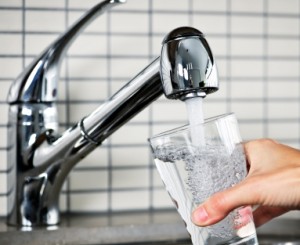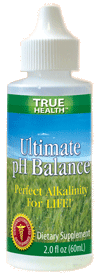 When you turn on the tap for water, like most people you probably assume the water that comes out is pure. Or, even if you know it’s not as clean as fresh water from an uninhabited mountain spring … you at least assume it’s safe.
When you turn on the tap for water, like most people you probably assume the water that comes out is pure. Or, even if you know it’s not as clean as fresh water from an uninhabited mountain spring … you at least assume it’s safe.
But the Environmental Working Group (EWG) has analyzed nearly 20 million records of water utility testing, and revealed that there are 315 pollutants in U.S. tap water.[i] More than half of these can be present in any amount, as they are not subject to safety regulations. This doesn’t mean they’re innocuous … only that regulators probably haven’t gotten around to researching them just yet.
Many of the chemicals are regulated, of course, but they still sometimes show up at dangerously excessive levels. This was the case for 49 contaminants detected by EWG, which resulted in polluted tap water for nearly 54 million Americans.
Which Cities Have the Worst Tap Water?
To answer the question everyone wants to know … the cities with the worst tap water according to EWG analysis … are below. In case you’re wondering, the ratings are based on:
- The total number of chemicals detected since 2004
- The percentage of chemicals found of those tested
- The highest average level for an individual pollutant, relative to legal limits or national average amounts
10. Jacksonville, Florida
Twenty-three chemicals were found, 12 of which exceeded health guidelines and one of which exceeded health standards. Industrial pollutants, agricultural pollutants, and sprawl and urban pollutants were all detected, among others.
9. San Diego, California
Twenty chemicals were detected, eight of which exceeded health guidelines and two that exceeded health standards. Water treatment chemicals and byproducts, such as chloroform, trihalomethanes (TTHMs) and haloacetic acids (HAAs), and industrial pollutants were the most common.
8. North Las Vegas, Nevada
Of the 26 pollutants found, 11 exceeded health guidelines. This included combined uranium, lead, bromate, radon and more.
7. Omaha, Nebraska
Forty-two chemicals were found, with 20 exceeding health guidelines and 4 exceeding health standards. This included agricultural pollutants like nitrate and nitrite, industrial pollutants like arsenic, water treatment and distribution byproducts and more.
6. Houston, Texas
Forty-six chemicals were detected in all, 18 of them exceeded health guidelines and 3 exceeded health standards. Chloroform, arsenic, radium-226, lead and methylene chloride were all detected at potentially harmful levels.
5. Reno, Nevada
Twenty-one pollutants were found, 8 of which exceeded health guidelines and 3 of which exceeded health standards (compared to a national average of 0.5). Industrial pollutants were particularly problematic, followed by naturally occurring contaminants that are often increased in areas affected by sprawl, agriculture or industrial development.
4. Riverside County, California
Twenty-two pollutants were detected, 13 of which exceeded health guidelines and 1 that exceeded health standards. Treatment chemicals and their byproducts, followed by industrial pollutants, were the most common offenders.
3. Las Vegas, Nevada
Thirty pollutants detected, 12 of which exceed health guidelines (the national average is 4). Industrial pollutants, such as aluminum, foaming agents, phthalates, and barium were especially prevalent.
2. Riverside, California
Thirty pollutants were detected, including 15 in levels that exceeded health guidelines established by federal and state health agencies (such as radon, perchlorate, arsenic, and combined uranium) and 1 that exceeded health standards set by the U.S. Environmental Protection Agency (EPA).
1. Pensacola, Florida
Forty-five chemicals were discovered in this Florida panhandle city’s water (compared to a national average of 8), including radium-228 and -228, trichloroethylene, tetrachloroethylene, alpha particles, benzine and lead, cyanide and chloroform. Twenty-one of the chemicals occurred in unhealthy levels.
If Your Water Doesn’t Kill You, It’s… Um…”Safe”
This is, thankfully, an exaggeration, but it’s not too far off from the truth because Americans, and that probably includes you, regularly drink water that contains 20, 30 or even 40+ chemical and other contaminants. They may linger at levels that are legal, that is, they are present in low enough concentrations that they won’t make you clutch your heart and fall to the ground when you take a sip … but year after year, day after day, drinking all of those chemicals cannot be good.
Now, we suspect you’ll find this to be as outrageous as we did, but the federal government does not actually require that your water be safe for long-term consumption — even though we all drink it long-term … what other choice do we have?
EWG states:[ii]
“Federal law does not require tap water to be safe for long-term consumption; the long-term risks of cancer and other health threats are balanced against the cost and feasibility of purification. As a result, health officials acknowledge that legally binding contamination limits typically allow exposure to levels of pollutants that present real health risks. For hundreds of other contaminants there are no legal limits at all — any amount is legal.”
Want to Give YOUR Water a MEGA-Healthy Boost?
Filtering your tap water is one of the best investments you can make for your health, considering that water is so essential to human life.
But… did you know you can add 4 drops of Ultimate pH Balance to your ordinary tap water and turn it into a veritable flood of health?
This natural elixir combats all of the acidic substances your body is faced with every day — this includes not only certain foods and beverages and even cellular waste, but also the pollutants in your environment … like those in your water.
When you become overly acidic, it can impact your heart and brain, your muscles, your bones and joints, every organ in your body.
Ultimate pH Balance is a simple way to raise your pH levels and get balanced; it’s a key to optimal health, and it may even help to combat all of the nasties found in U.S. tap water… click the picture to the right to discover more now!



Our house is on well water. Where is the best and most reliable place to have our water tested ?? We are in zip code 74074.
That’s Stillwater, OK.
Thanks, MKB
Where is the best and most reliable place to have our water tested ?? We are in zip code 78249?
Remember, all town water is regulated and has to pass tests. so if the pollutants mentioned here are still getting through just imagine what bottled water might be like!
There are no safety or health checks on bottled water.
When I built my house 5 years ago, the well had to be drilled an extra 60 feet because of nitrate levels. I was never shown the test results or asked to agree (and I wasn’t told until right before the last town inspection). Now, years later, I have come across other inspection violations. My builder, and virtually all of his subcontractors, went out of business shortly after finishing my house.
I have only found out now that the many items that did not pass inspection would have been covered under the state’s 1 year coverage for homeowners affected by the mass exodus of builders and construction workers around that time. For instance, I don’t have proper footers under porches and stairs (unless you think a 4″ tall 1 foot round is sufficient – my A/C propped up by 6″, three sets of sinking deck stairs, and my slightly sagging house length porch would disagree with you). I also don’t have drains that run AWAY from the house more than a foot or two (no grading was done on the property, including no grading against the side of the house, so the sump pump excels at repumping water it just pumped I can’t even get to the chemical problems until I can get the drainage problems solved, because whatever I use to treat chemical problems will just accumulate against the outside of the basement.
Also forgot, very hard water from the well has filled my pipes with hard water crystalline structures that are blocking water to many of the unused water points in the house. Water softener installer sold us a different system than he usually sells and didn’t tell us THIS softener needed salt (selling point of the expensive one was no salt). Did get a reverse osmosis water system for drinking water at the time and only drink and cook from that. So we had safe water to drink and disastrous water for everything else. Just recently added a second humidifier onto furnace after finally realized why the expensive whole house one wasn’t working – the plumber installed it on the air intake instead of the air outtake (i.e. the wrong side), which explained why our water softener was leaking (it wasn’t – the furnace was evaporating all the water added by the humidifier right before the air came into the furnace).
Please, what are the three things I need to accomplish over 2017? I have figured out many of the install mistakes missed by my builder (he was going out of business and having his first child while trying to finish our house). If I knew what the 3 most important things to accomplish are for this year and take care of those, then I will have laid a solid foundation for getting my house straightened out (I have maybe 10 areas of repair like this for my house and grounds to get on a solid foundation).
Some of the early aspects for the other areas include:
– having a driveway installed (plans were created in 2016 by a landscape architect)
– build a compost generator or 2 (live in a rural area with frequent power outages, plans were purchased in 2016) – have ready access to wood and wild forage, but not oil or gasoline if extended outage
– increase water storage from well, check efficiency
– check efficiency on all major appliances
– ask landscaper which areas to complete first (separate from the hard-spaces list, interested in planting edibles first if possible, not sure what to do about the overall grading of the 3 acres)
– check all caulking in the entire house (basement and living areas, windows, doors, etc.)
– check all insulation in the entire house (2016 testing revealed over 2 pt difference in temperatures in several rooms – either hot air falls in my house, or something is wrong with the insulation)
– work on construction plans for finishing out basement to make senior apartment for John (Brenda’s father)
– make jewelry bench room/inventory rooms in basement (Charles Corporation)
And of course, SET PRIORITIES 🙂